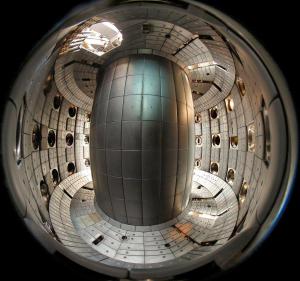Not all ELMs are trees
ELMs in fusion language is an acronym for Edge Localized Modes. ELMs behave rather like solar flares where a huge burst of energy erupts out of the magnetic field confining the sun (itself a huge ball of plasma). They are bad news for fusion experiments as they cause the plasma to lose up to 10% of its energy.This "lost" plasma is mainly deposited on one part of the experiment casing - the divertor - which can be damaged over time by these repetitive bursts of energy. Therefore, the control of ELMs is an important issue for the ITER team.
The ELMs phenomenon was first observed in a German fusion experiment, ASDEX, in 1981. They occur in fusion machines, of which ITER will be the biggest in the world when it comes into operation, when the plasma is heated above a certain power level which increases with density, magnetic field and machine size.
The injection of pellets of deuterium ice into the plasma has been shown to be effective in reducing the loss of plasma energy by ELMs. Experiments in support of ITER involving this technique are due to be carried out in the European tokamaks, JET and ASDEX-Upgrade, during their next period of operations.
Listen to the sounds of density fluctuations due to ELM bursts in a Swiss tokamak: (Editor's note: no longer available).
The signal has been slowed down so that ELMs appear at a rate of five per second whilst in reality they are nearer two hundred per second. (Courtesy of CRPP EPFL).


